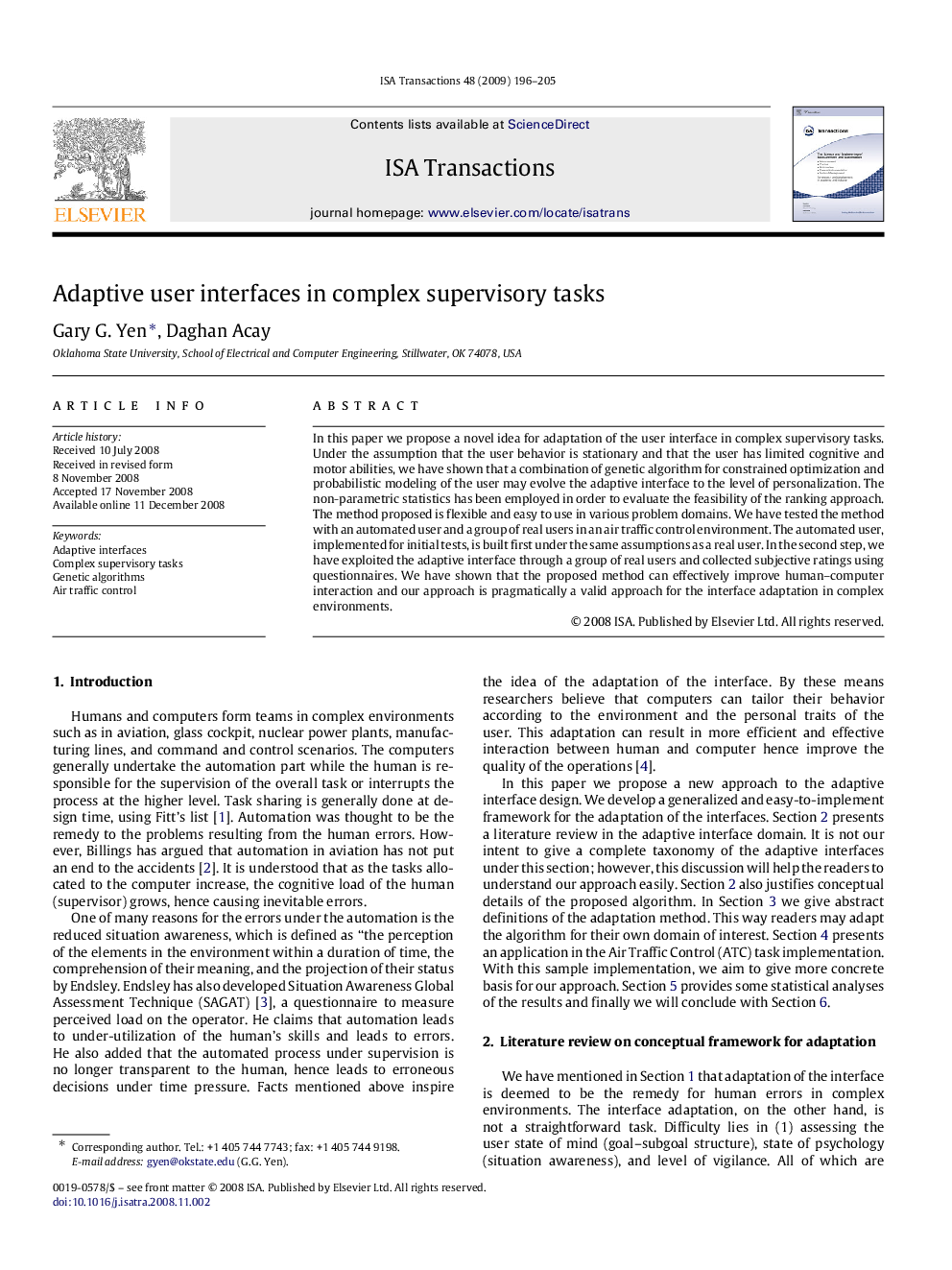| Article ID | Journal | Published Year | Pages | File Type |
|---|---|---|---|---|
| 5005326 | ISA Transactions | 2009 | 10 Pages |
In this paper we propose a novel idea for adaptation of the user interface in complex supervisory tasks. Under the assumption that the user behavior is stationary and that the user has limited cognitive and motor abilities, we have shown that a combination of genetic algorithm for constrained optimization and probabilistic modeling of the user may evolve the adaptive interface to the level of personalization. The non-parametric statistics has been employed in order to evaluate the feasibility of the ranking approach. The method proposed is flexible and easy to use in various problem domains. We have tested the method with an automated user and a group of real users in an air traffic control environment. The automated user, implemented for initial tests, is built first under the same assumptions as a real user. In the second step, we have exploited the adaptive interface through a group of real users and collected subjective ratings using questionnaires. We have shown that the proposed method can effectively improve human-computer interaction and our approach is pragmatically a valid approach for the interface adaptation in complex environments.
